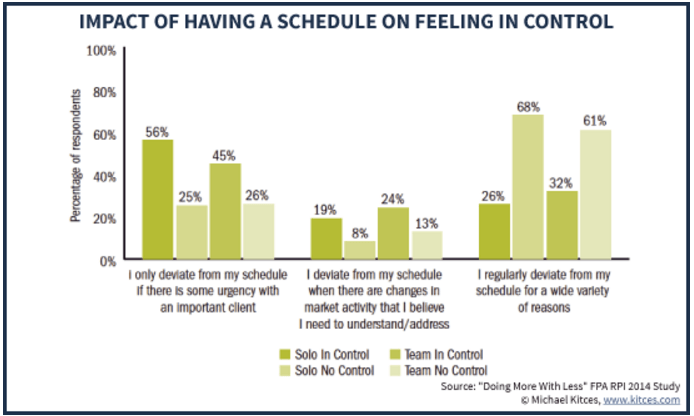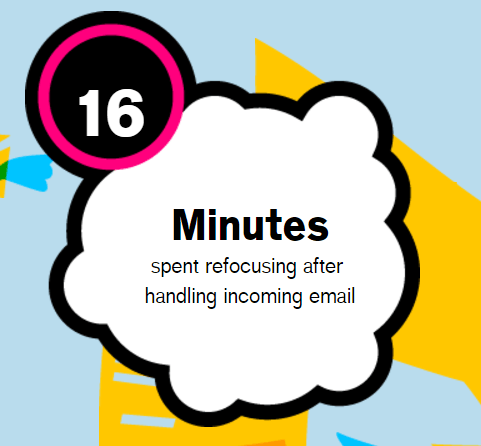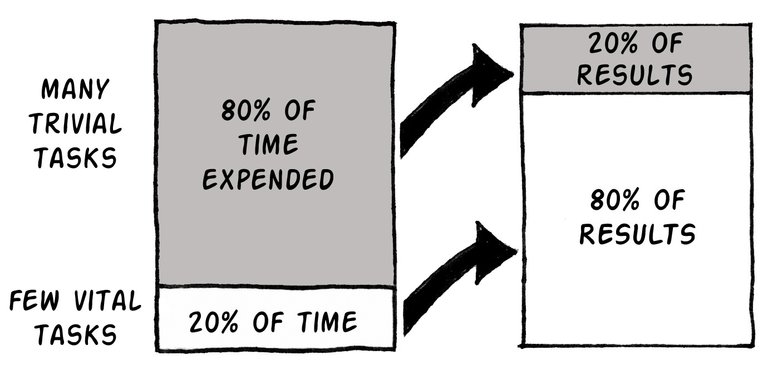
You’ve played Mortal Kombat 3, right? Yea, that old game from the 90’s.
I spent hours enjoying it each day.
With Sub-Zero, i used to be unbeatable.
Back then, I never thought a simple, harmless statement at the intro screen of MK3 would create my life hell a decade later.
“There’s no knowledge that is not power”
Yea, that’s what it said.

I took this a bit too seriously, I guess.
And while i like the folks behind Mortal Kombat for what they created, I hate them for showing this at the beginning of the game.
It’s a lie, a giant FAT lie!
But, for many folks, it’s a part of our belief system. we have a tendency to really believe that knowing additional is nice for us.
You might not have played this game (or simply didn’t take it as seriously) however you’re most likely fighting the same problem.
As a budding entrepreneur, this can be one of the most important things holding you back.
You think you wish to know more and, as a result, you lose focus and fail to take action at the proper time.
Every year, you see new success stories emerge out of your industry. You’ve seen uncounted newbies become specialists and influencers.
You’ve read case studies of broke homeless guys turning their lives the other way up creating six figures online from beach resorts.
But even when reading all of it, and buying dozens of information products online, you’re right where you were a year ago (okay, I’m being a bit harsh – you’ve moved an inch, happy?)
You know why you retain doing this over and over again?
Because you think that you need to know more.
STOP kidding yourself!
And within the age of data overload, this feeling can never get away.
Until you understand that you just DON’T need to know everything to find success.
You just need to target a couple of things, do them better than many others, and get your fair proportion from the market.
Easier said than done, right?
Here are a couple of ways that you'll be able to program your brain to target your goals, and take action on what you already understand.
What You'll Learn in this Article
- How to program your brain to target the most necessary tasks.
- A simple method you'll use to spot your most profitable information sources and scale them up.
- A powerful framework that will create your daily todo lists far more effective.
- How you'll break down larger goals and objectives into smaller activities and take immediate action.
1. Define Your Working Hours To Reduce Distractions
Sounds boring, right?
One of the most important perks of the web life-style is the flexible work schedule it offers.
But that’s also one of its biggest drawbacks.
When you tell your brain that you can work at any time and from anyplace, it loses focus and doesn’t understandwhen to really get in the operating mode.
A research mentioned in the renowned book, The paradox of choice – Why more is less, shows that once wehave too many choices in life, we’re likelier to feel dissatisfied and sad with.
Why? because our brain is often thinking of the opportunity price, the “What if”.
When you limit your decisions, you create a lot of concrete selections.
Similarly, when you don’t have a set schedule, your brain is unable to order things.
As a result, you either find yourself doing little work, or work twelve hours on the trot.
Studies show that individuals who follow fixed working hours feel rather more in control of their business.

Source: Kitces
So it doesn’t matter if you wish to work just three hours per day.
But fix those three hours in your schedule, and leave everything else aside throughout that time.
This will get your brain functions more targeted on the tasks at hand, and increase your productivity many times.
I’m not interested in a debate on this.
Just give it a go for a couple of days and experience it yourself.
2. Write Down Your Goals and Set Deadlines To Decrease Uncertainty
Do you have goals for your business?
If you don’t have goals, you can’t plan.
And failing to plan, is planning to fail.
A study by Massey University (Switzerland) established a right away relationship between goals, focus and self-motivation. individuals with clear goals have a far larger sense of purpose, and stay more targeted and self-motivated.
As a result they’re less probably to waste time, and typically have a better success rate
But there’s a difference between concrete goals and mere wishes.
If you’ve been wanting to begin a blog, or write an eBook or produce a niche web site that’s simply a wish, as long as it’s in your mind.
They become goals once you write them down, break them into milestones and smaller activities, and set deadlines.
Yes, write them down on a piece of paper, not on notepad, Evernote or Google Docs. Pin it to your work table, or any other place wherever you'll see it daily.
When you set your goals, ensure they’re SMART.
S – Specific
M – Measurable
A – Achievable
R – Relevant
T – Time Bound

Source: NewfoundBalance
For example, your goal can be making a niche website and earn cash from affiliate commissions.
But this can be a obscure goal. you need to make it SMART.
Here’s how
- Write down the precise niche you wish to focus on.
- Write down all the activities you would like to perform in order to create a money creating niche website. For a niche website, your activities may be
a. Keyword analysis
b. Domain registration and hosting
c. installing and setting up WordPress
d. making the base pages for your website (About, Contact, Privacy Policy, Affiliate Discloser etc.)
e. creating content for your blog.
f. creating social media pages, and promoting your content
You can list many other activities also, however every of those activities should be time-bound. Set deadlines for every of them and create yourself accountable.
A person with clear goals wakes up each morning knowing specifically what he must do in order to grow his business. He’s able to track his progress, learn from his mistakes and create enhancements wherever necessary.
On the opposite, if you don’t have goals, each new day is filled with anxiety and much of wasted time.
3. Identify Your Most Profitable info Sources And Scale Them to maximise Impact
If you’re just like the average niche marketer, you’re presumably subscribed to dozens of email lists, and often receive offers, notifications and messages from countless different blogs. Plus, you follow all of them on Facebook, Twitter and every other social network as well.
There’s no damage in it, as long as you'll prioritize your information intake.
This is where productive and thriving web marketers are totally different from you.
They determine their most significant info sources, and shut off everything else. They notice that they don’t need to know every new analysis that comes up or each new blog post that somebody has written.
You need to try and do the same.
The world won’t stop spinning if you stop noticing.
A simple way to do this is to align each source of information with your goals. Whenever you’re tempted to read a new web log post, a new analysis or any other sort of content, ask yourself if it contributes on to any of your goals.
If it does, consume it. however if it doesn’t, simply move on.
Tim Ferris, author of The 4-Hour Work Week, is a renowned productivity expert. He mentioned in his book how he managed info overload by fully quitting T.V and News. Instead, once per week he would ask any of his friends if something big had happened within the last week.
Even if you don’t go to that extent, here’s a straightforward exercise you'll do to chop off unnecessary info from your life.
- Identify where you pay most of your time on the net and list them down on a piece of paper. Email, Facebook, Twitter and random browsing are possible sources.
- Now look at every source and ask yourself if it's contributing to your goals in any means.
- Give an importance score (1-10, 1 being most important) to every information source.
- Eliminate anything that’s below 6.
- Now sort the remaining sources according to importance and assign a time period for every of them. to Illustrate, you could assign 15 minutes to Facebook.
- Now rather than randomly accessing these information sources, schedule them at the end of your work day or distribute them into multiple slots. build a conscious effort to not exceed any of the slots.
Limiting your information intake and taking control of your time is one of the foremost necessary steps towards achieving your goals and getting things done.
4. Cut Down on Email and Social Media Usage To Maintain Focus
Did you know that email and Facebook are the biggest time wasters for the average American?
Studies show that an average american worker checks email thirty six times in an hour. And it takes around sixteen minutes on the average to refocus on tasks every time after checking email.
When you mix these 2 stats you actually understand the productivity havoc email addiction is inflicting.

Source: Atlassian
Similarly, american consumers spend 40 minutes daily simply browsing Facebook.
Of course, Facebook may be a important platform for web marketers. however you need to honestly assess how much time you spend on Facebook doing something that directly contributes to your business (see point no. 3)
Tim Ferris recommends lowering on email usage and anxiety with an easy technique. Use an email signature like this.
“I answer emails at 1PM, 3PM and 5PM. If you would like a faster response, please call”
It’s additionally necessary to reduce your smartphone app notifications. You don’t need a notification on every occasion there’s a new email, a WhatsApp message, a retweet or a comment on Facebook.
A study by american Psychological Association revealed that folks who receive constant smartphone notifications have a lot of shorter attention spans and find it hard to focus on tasks. As a result, their productivity levels additionally go down.
Change your smartphone notifications to only the foremost necessary apps. Keep all other apps for your spare time.
5. Follow the GTD Framework for Creating Effective To-Do Lists
We’ve all heard of to-do lists.
Every productive and goal oriented person maintains them at some level.
But an easy modification within the method you create to-do lists will build them much more effective and help you focus only the task at hand.

In his book Getting Things Done, renowned author and productivity guru David Allen discusses the GTD system for making to-do lists.
It’s an easy system that focuses on writing everything down and keeping your mind free. The GTD system has 3 elements,
- Archive list – list of things you may need at some point but don’t need directly.
- Current task list – a listing of active tasks that require to be done. each task has to be written as an action item that should provide you with a clear guideline on what’s next. for example, rather than writing “Make my blog more secure”, write “Ask Jim regarding the most effective security plugins he has been using”. The more precise your action item is, the better. try rewriting everything on your to-do list in a way that leads you to the next action. This small activity contains a huge psychological impact.
- Daily Task Folder – a folder for every of the next 31 days of the present month, and 12 separate folders for the months to follow.
You can manage this whole system either on apps like Evernote or Google Keep (my personal favorite).
Every day you'll be able to pick up your current to-do list for the day and review the actions for that day. If you're thinking that a task or a piece of information could be important, but unsure about it, send it to the archive list.
If you see an item that has to be done later within the month or year, simply move it to the relevant folder.
The remaining tasks on your list are current to-do tasks that have clearly defined action items.
Doing this activity every day for a couple of days can get the GTD system rolling for you, freeing up your mind from unneeded clutter, and making it easier for you to focus on the tasks at hand.
6. Pass Your Daily Activities Through the 80/20 Rule Filter
You’ve heard of the 80/20 rule, right?
Also called the Pareto principle, the 80/20 rule says that for nearly each event, 80% of the results come from 20% of the causes.
With in depth testing, many management experts have come to the conclusion that this rule applies to almost each aspect of business and life.
You can apply this rule to your current to-do list as well.
For example, if you pass all of your information sources (blogs, Facebook groups, etc.) through this filter, you’d notice that 80% of the most valuable info comes from 20% of the all of your information sources.
The same applies to the various tasks you perform relating to your blog.

Once you identify the 20% activities that bring the 80% results, your job is to scale them and cut off the rest of the activities. this may help you focus on the things that have an immediate impact on your life and your business, and provides you a sense of direction.
Time for You to Take Action
The truth is clear and simple – the planet is an imperfect place, so is everything in it.
Waiting for the right time is nothing but procrastination.
In this age of information overload you'll never know everything. but thankfully, you don’t have to.
You just have to be compelled to understand enough to accomplish your goals.
So leave your comfort zone, stop blaming others, and begin planning for your success.
You have already got everything to start out a successful business, all you need is start taking action.